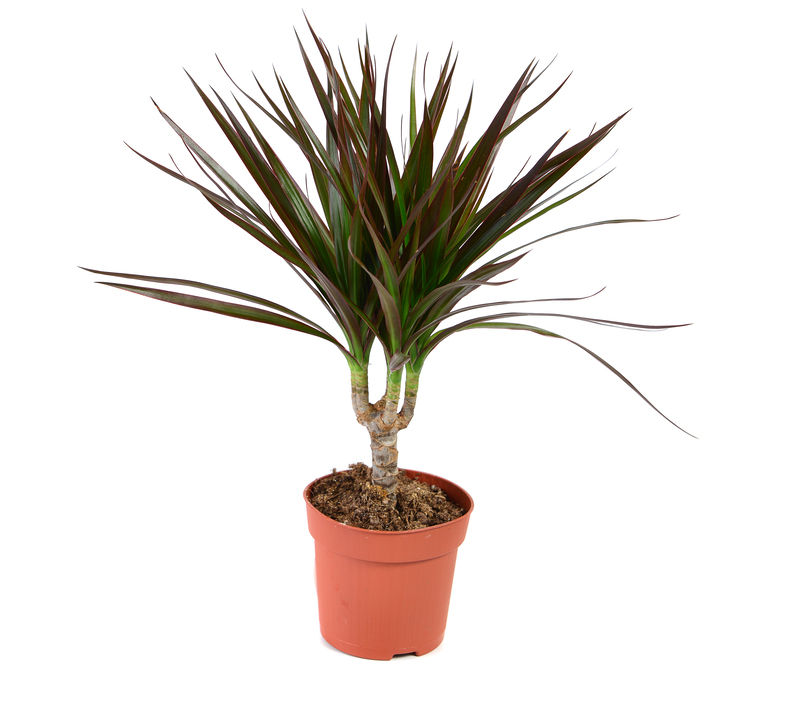The Best DIY Methods for Getting Rid of Stubborn Tree Stumps
Tree stumps can be unsightly, hazardous, and, if left untreated, can even become a breeding ground for pests and fungi. Whether you've recently cut down a diseased tree, removed a safety hazard, or simply want to reclaim your outdoor space, getting rid of those immovable stumps might seem impossible at first. Fortunately, there are effective DIY stump removal methods you can try, minimizing the need to hire expensive professionals. In this guide, we'll walk you through the best DIY techniques for removing stubborn tree stumps and provide helpful tips, so your landscaping project will be a success.


Table of Contents
- Manual Removal: Digging out the Stump
- Chemical Methods: Accelerating Rot
- Burning Tree Stumps: The Safe Way
- Natural Decomposition: Letting Nature Do the Work
- Mechanical Methods: Grinding and Chopping
- Safety Tips for DIY Stump Removal
- Frequently Asked Questions on DIY Stump Removal
Manual Removal: Digging Out the Stump
If you're dealing with a small to medium-sized stump, or if you enjoy a substantial physical challenge, manual removal can be an effective technique. This method requires basic landscaping tools and some elbow grease.
Tools You Will Need
- Shovel or spade
- Mattock or grub hoe
- Axe or hand saw
- Loppers or pruning saws
- Heavy-duty gloves
Step-by-Step Guide
- Use the shovel to dig around the base of the stump, exposing as much of the root system as possible.
- With the mattock or grub hoe, loosen the soil and cut away any smaller roots using loppers or a saw.
- Once the major roots are exposed, cut through them with an axe or hand saw. For thicker roots, an axe works best.
- After you've severed all significant roots, wiggle and pull the stump. You may need to repeat digging and cutting until the stump comes free.
Pros: Cheap, requires no chemicals or fuel, and doesn't damage surrounding landscaping.
Cons: Labour-intensive and impractical for very large or old stumps.
Chemical Methods: Accelerating Rot
For large, stubborn tree stumps, chemical rotting is one of the most popular DIY stump removal methods. It's less physically demanding and speeds up the natural decomposition process.
Materials Required
- Power drill and large drill bit (at least 1 inch diameter)
- Potassium nitrate-based stump removal chemical
- Plastic tarp
- Water
- Mulch or soil
- Protective gloves and goggles
The Process
- Drill several deep holes into the top and sides of the stump, going as deep as possible without piercing all the way through.
- Fill the holes with the chemical stump remover as per manufacturer instructions (usually potassium nitrate, which accelerates decay).
- Add water to the holes to activate the chemical process.
- Cover the area with a plastic tarp to retain moisture and further speed up rotting.
- After a few weeks, the stump will become soft and spongy and can be broken apart for removal. Add mulch or more soil to aid decomposition.
Pro Tip: Check local regulations as some chemicals may be restricted in your area.
Pros: Minimal physical effort, effective for large or old stumps, and accessible supplies.
Cons: Takes weeks or months for initial results, can't be used for quick removal, environmental concerns if overused.
Burning Tree Stumps: The Safe Way
Another practical method for getting rid of tough stumps is by burning them. This approach requires caution and isn't suitable in all areas, but it can be an efficient way to break down a stump when allowed by local ordinances.
Preparation
- Check local fire regulations to ensure stump burning is permitted.
- Clear any debris, plants, or flammable substances from around the stump.
- Drill holes into the stump to allow fuel and air to penetrate.
How to Burn a Stump
- Pour kerosene or fuel oil (never gasoline) into the drilled holes. Allow it to soak overnight.
- Light the stump carefully, making sure to monitor the fire at all times.
- Keep a water hose, fire extinguisher, or bucket of sand close by for emergencies.
- As the stump burns, continue to add fuel as necessary, always maintaining control over the burn.
After several hours, the stump will burn down into ash, which can then be removed or buried.
Pros: Effective for large, old stumps; relatively quick compared to natural decomposition.
Cons: Fire hazard if not properly controlled, not allowed in all areas, and can damage nearby plants.
Natural Decomposition: Letting Nature Do the Work
For those who prefer a completely natural approach to DIY tree stump removal--and are not in a hurry--natural decomposition is a viable option. Over time, fungi, bacteria, and insects will break down the woody tissue, returning nutrients to your soil.
Enhancing the Process
- Cut the stump as close to ground level as possible.
- Drill deep holes into the stump to encourage fungal and biological activity.
- Keep the stump moist and cover with soil, compost, or mulch to attract bacteria and fungi.
- Regularly add nitrogen-rich fertilizer to feed the microorganisms.
- Consider planting fungi spores or leaving old fruit and vegetable scraps nearby.
Pros: 100% chemical-free, environmentally friendly, enriches soil quality over time.
Cons: Takes years; stump will remain visible in your landscape during decomposition.
Mechanical Methods: Grinding and Chopping
If you crave fast results, mechanical stump removal techniques--which include stump grinding and chopping--are among the quickest stump removal options available to DIY enthusiasts.
Stump Grinding
- Rent a stump grinder from your local hardware store or garden center.
- Follow the equipment manual for operation and always wear protective gear (goggles, gloves, boots).
- Grind the stump down in layers until it is below ground level.
- Backfill the hole with soil and mulch when finished.
Manual Chopping
- Using a chainsaw, cut the stump as low as possible.
- Chop and chip away at the remaining wood using an axe, hatchet, or adze.
- This method is most practical for smaller or well-rotted stumps.
Pros: Stump grinding is fast and effective, can handle large stumps, and creates minimal mess.
Cons: Requires rental costs or special tools, safety risks with machinery, and produces a lot of wood chips.
Safety Tips for DIY Stump Removal
- Always wear protective gloves, goggles, and work boots, especially when using chemicals, axes, or power tools.
- Read and follow all manufacturer instructions for chemical products and machinery.
- Check local ordinances for burning and chemical usage.
- Keep children and pets away from the work area.
- Don't use gasoline for burning--it's extremely dangerous and prohibited for this purpose.
- If in doubt, consider hiring a professional for very large or tricky stumps, especially near utility lines, sidewalks, or structures.
Frequently Asked Questions on DIY Stump Removal
Q: What is the easiest way to remove a tree stump at home?
If the stump is not too large, manual removal can be quite straightforward. For larger stumps, chemical or mechanical methods like stump grinding are typically easier and faster.
Q: How long does it take for a tree stump to rot using chemicals?
With potassium nitrate stump remover, you can expect significant softening of the wood in as little as 4-6 weeks, depending on stump size and species. However, full decomposition can take several months.
Q: Is it safe to burn a stump myself?
Burning a stump can be safe if local laws permit it and you take all necessary fire safety precautions. Always monitor the fire and never use gasoline.
Q: Are store-bought chemical stump removers harmful to the environment?
Most stump removal chemicals, particularly potassium nitrate, are designed for targeted use and break down over time. However, overuse or misuse can damage the soil and groundwater--apply sparingly and follow all recommendations.
Q: Can I plant a new tree where the old stump was?
Once you completely remove the stump and its major roots and replenish the soil, you can typically plant a new tree in the same spot. Consider adding compost to restore soil health.
Conclusion: Choosing the Best DIY Stump Removal Method
The best way to remove a tree stump yourself depends on your budget, timeline, physical capabilities, and environmental considerations. Manual removal is suitable for smaller stumps, while chemical or burning methods work better for more substantial or deeply-rooted stumps. Mechanical grinding offers a fast and professional finish but comes with equipment costs and safety considerations. You might even want to combine several methods--such as chopping first, then applying chemicals or burning for faster results.
Whichever technique you choose, remember to prioritize safety, follow all local regulations, and dispose of stump remnants responsibly. With patience and the right approach, DIY stump removal can make your yard safer, more attractive, and ready for new landscaping ventures.
We hope this comprehensive guide helps you tackle even the most stubborn tree stumps with confidence and success!